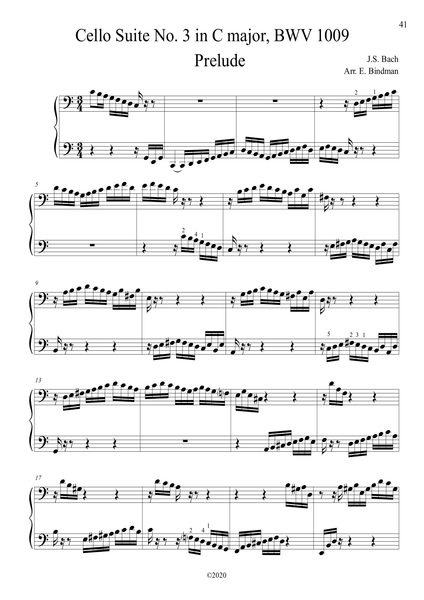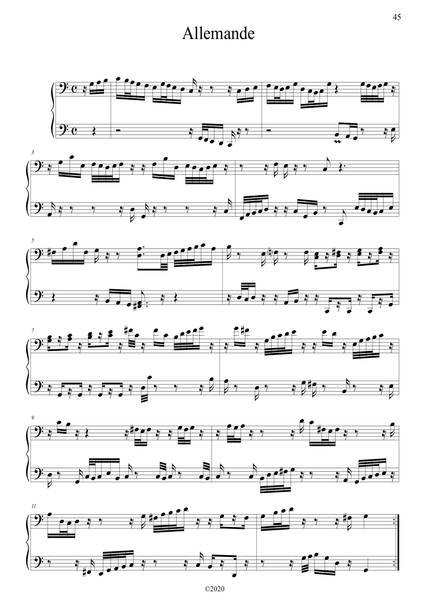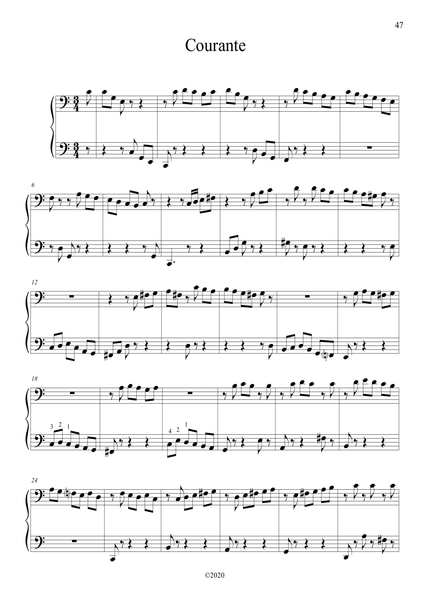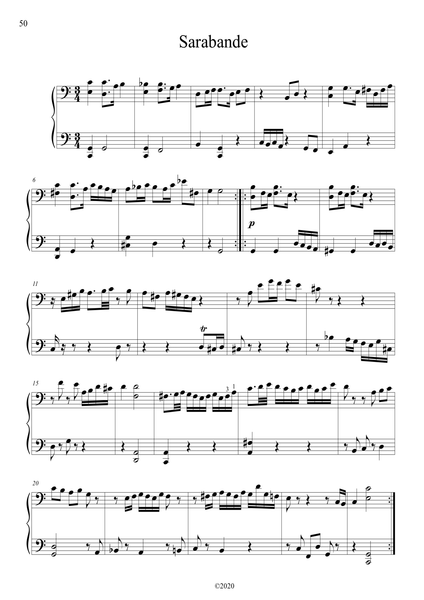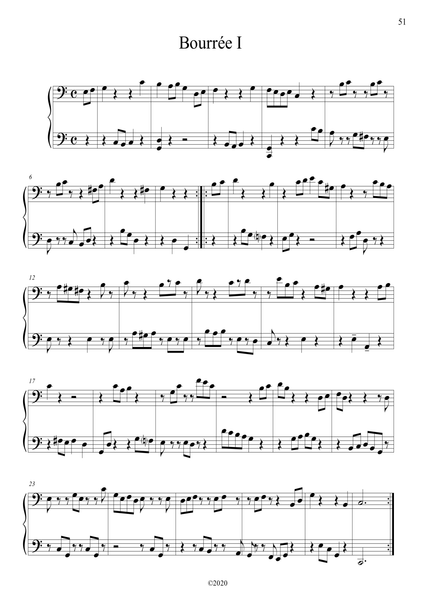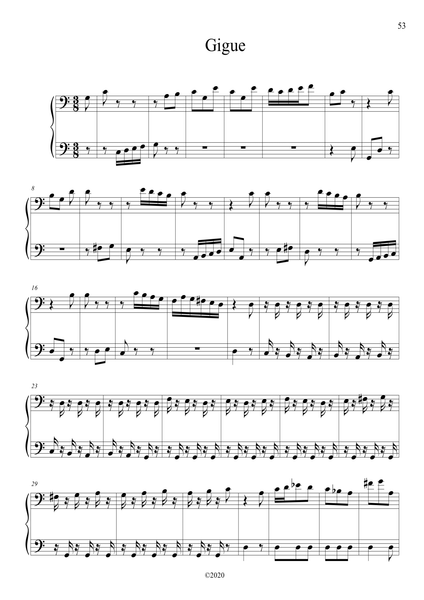J.S. Bach: Cello Suite No. 3 in C major, BWV 1009 – arranged for piano by Eleonor Bindman (GPC077)
This is the sheet music edition of a new piano arrangement of the Bach Cello Suite No. 3 in C major by Eleonor Bindman.
Solo piano
15 pages
Duration: 20:04
Audio samples
Buy, stream and download the CD here.
C major is the key of ultimate stability (and visual simplicity on a keyboard) and Suite No. 3 starts with a no-nonsense claim to its domain: a downward scale plus arpeggio, all in the first measure, constituting the conceptual thread of this Suite. Whereas most Baroque or Classical pieces will likely use main chords at the start and have plenty of scale-wise motion, the extent to which Bach presents the “unadulterated” octaves of scales and apreggios here reads like a statement. Try as you might, expressive possibilities are overshadowed by the cognitively primal musical message, pattern after pattern, and it all feels very healthy and full- blooded. The illustration you see is the beginning of the Prelude in the musical handwriting of Anna Magdalena Bach, the second wife of the composer. She was the source of stability and comfort in his domestic life for almost 30 years and copied much of her husband’s music, including the complete Cello Suites.
The simple yet remarkable Prelude could pass as a warm-up exercise for any instrument, but it also manages to be musically satisfying. Measure 19 gives us a first glimpse of something new, leading to a contrapuntal diminished harmony in m. 21 and gently lowering us into a few Philip Glass-ian measures (27-32, a nice opportunity for a contrasting soft dynamic and some pedal). The sequence in mm. 37-44 develops into a wonderful pedal point which starts at m. 45 and continues through m. 60. The piano gives us an opportunity to continuously hold the G an octave lower than the repeated one (mm. 45-61) with the left hand which reinforces the pedal point and effectively adds to the sonority, so feel free to experiment with that. The dominant chord in m. 77 is followed by a reiteration of the first measure in 78, but ending instead with a “surprise” C minor chord with A on top, melodically enhancing the ensuing chord progression of V7-I-V-I when connected with the respective upper notes B, C, C, B, C. Bach could have ended with the tonic chord in m. 82 but he regales us with another pedal-point in a coda, leading to a long trill in mm. 85-86 (use the middle pedal of the piano if you can, to help sustain the bass and manage the trill). To drive his point home, Bach decides to use that nice first measure of the scale and arpeggio yet again. Third time is a charm, wouldn’t you agree?
The Allemande is jolly and almost comical in its continued emphasis of the scale through various playful combinations of 32nd and 16th notes. Measures 6-7 even use a scale going upward in thirds! This is an excellent example of Bach throwing away the conventions of a dance form and just doing his thing. The quarter notes here would be quite slow, about 50, since they are often divided into 32nd notes.
Arpeggios take over for the beginning of the Courante but they are quickly joined by scales in mm. 4-7. In traditional 3/4 time yet written almost exclusively in a steady stream of 8th notes, this movement is completely devoid of the stylistic intricacies of a French Courante and persists in the simple and joyful mood set by the Prelude and Allemande. A good target tempo is 160 per quarter note but it would also sound lovely at a more measured and elegant pace.
Our third Sarabande sounds more like a dance than the first two because of its simple initial rhythm and phrasing. There is a hint of dialogue after the double bar and quite a few interesting modulations before a D minor cadence at m.16. The hearty key of C major wards off the philosophical depth that abounds in the others Sarabandes. In my imagination, this is a comfortable dance of a happily married couple, at 50 per quarter note.
The two Bourrées of Suite #3 are very well known, second in popularity only to Prelude 1 of all Cello Suites movements. Bourrée I is the only movement in Suite No. 3, besides the Sarabande, which doesn’t make obvious use of scales or arpeggios. It is packed with implied harmony and counterpoint (the first four measures are clear I-V-V7-I chords), unlike Bourrée II which melancholically meanders along the C minor scale and sounds very sad and lonely despite crossing into Eb major for a while. As we are all accustomed to the commonly conveyed character of these two dances, I made an effort to give them new personalities for the recording, deliberately speeding up Bourrée I (96), and choosing a slower tempo and a muted dynamic range for Bourrée II (66). To further underscore the forlorn character of Bourrée II, I added short fragments of counterpoint for the repeats.
The Gigue goes back to spelling C major out in the first two measures, and splits into two alternating voices in mm. 21- 31. In measures 33-39 Bach uses both voices to punctuate the rhythm, evoking a peasant dance mood. He continues the fun in the second half, now spelling the C-major scale out with an “upper neighbor” following each note in mm. 49-50. Then he pretty much follows the blueprint of the first half and ends, with a wittily “interrupted” downward C major scale juxtaposed with an ascending C major arpeggio in mm. 105-108, easily seen when divided between the two hands on the piano.
– Eleonor Bindman







